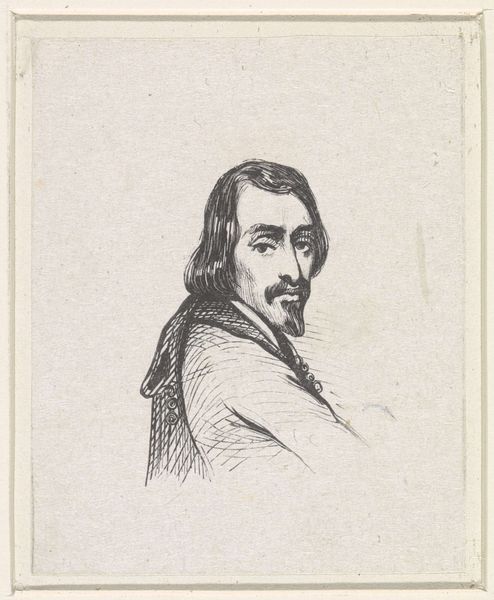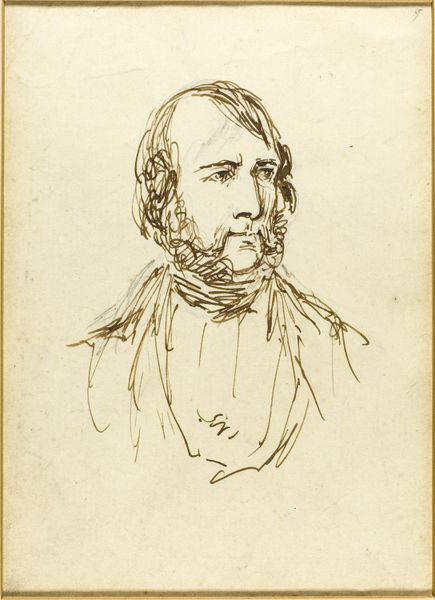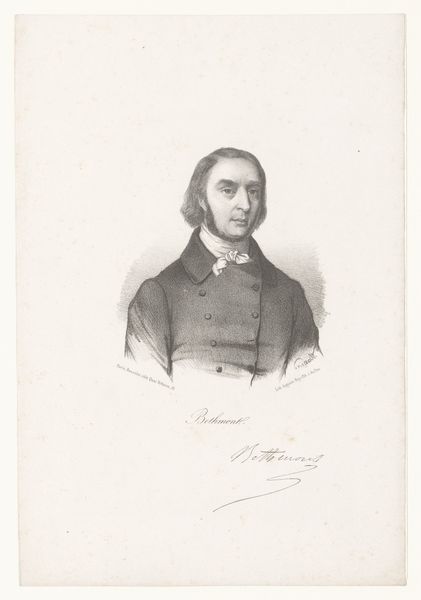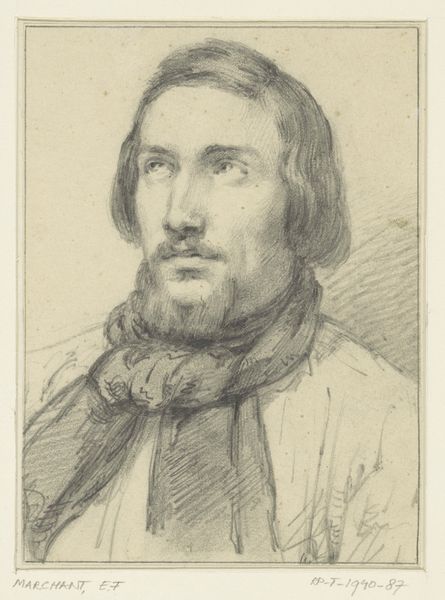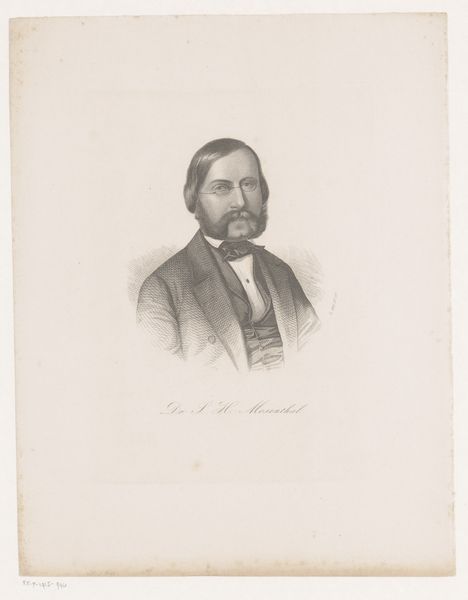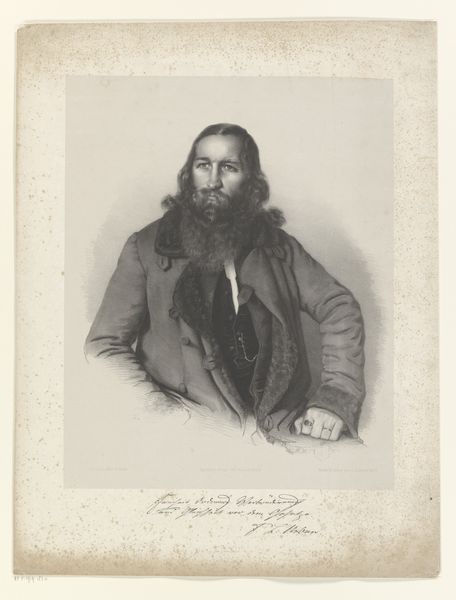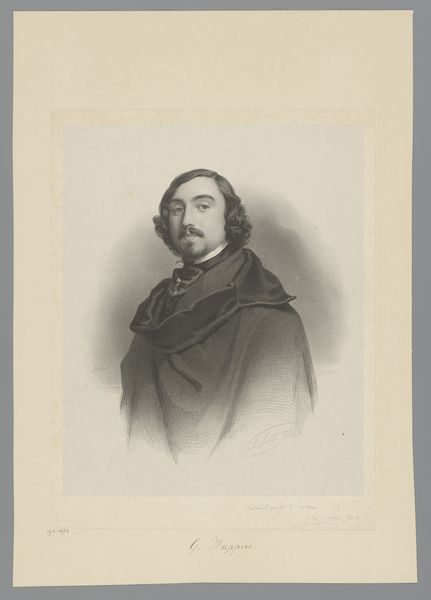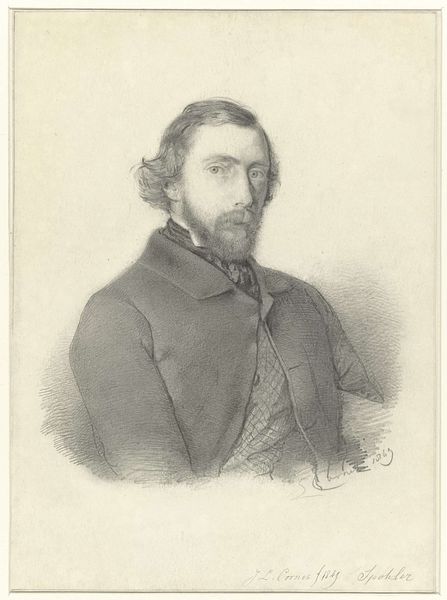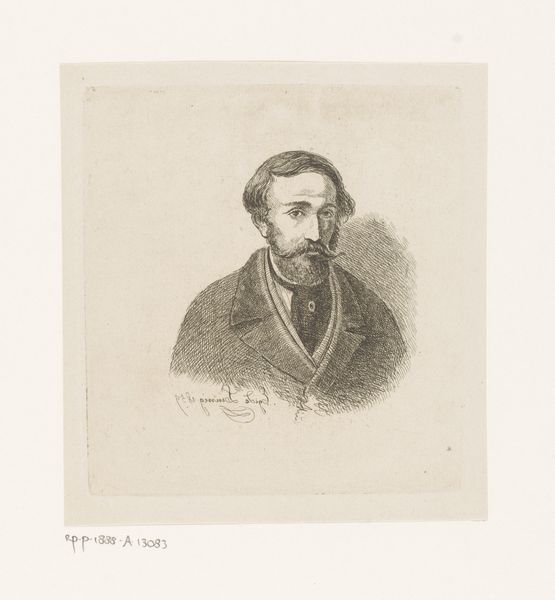
Dimensions: height 70 mm, width 55 mm
Copyright: Rijks Museum: Open Domain
Curator: Here we have an intaglio print titled "Portret van Edouard François Marchant." While the indicated date is circa 1823-1923, the piece feels evocative of the Romantic era. What are your initial thoughts? Editor: Austere and vaguely melancholic. The lines are quite fine, giving the image an ethereal quality. The subject’s eyes are direct, though, and the detail in the face pulls you in. Curator: Note how the artist has used the contrasting line work to define the planes of the face. This creates not just depth, but also communicates structure through a delicate, nearly scientific observation. Editor: It's compelling how a simple scarf and slightly disheveled hair communicate a sort of bohemian identity. It invites speculation about Marchant, but perhaps more so, it reveals the period's growing fascinations with particular archetypes. This reminds me of the shift of emphasis, the artist moving away from courtly to bourgeois circles. Curator: Precisely! The interplay of light and shadow across his face—especially the way the artist used shading around the eyes and cheekbones—conveys introspection. Editor: But where was it exhibited, and for whom? This form suggests it could have been a plate extracted from a larger compendium. Curator: Considering it is an intaglio—ink transferred to paper via etched lines—we see an embrace of Romanticism reflected not just in subject, but also process. The creation of prints and proliferation of imagery democratizes visual arts to a greater audience. Editor: A crucial point. I'd also consider who was creating portraits then. This could tell us volumes about production, networks of patronage, or simply Marchant's self-presentation. Curator: What I find beautiful is the almost imperceptible texture created by the intaglio method itself— a subtle physicality amidst its detailed rendition of a face. Editor: Yes, seeing these nuances allows us to recontextualize artworks often obscured by their institutional presentation, moving from an artistic object towards active visual agent! Curator: Well, that provides food for thought. A remarkable convergence between the power of lines and the power of access to visual art!
Comments
No comments
Be the first to comment and join the conversation on the ultimate creative platform.
